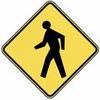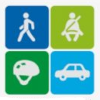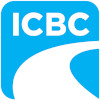Senior Driver Re-Exams
- Read more about Senior Driver Re-Exams
- 5 comments
- Log in to post comments
 I am often asked to write on the topic of senior driver re-exams when there is a crash where an older driver has mistaken the gas for the brake and collided with a building. People are concerned that many members of this easily identified segment of our society shouldn't be on the road.
I am often asked to write on the topic of senior driver re-exams when there is a crash where an older driver has mistaken the gas for the brake and collided with a building. People are concerned that many members of this easily identified segment of our society shouldn't be on the road.

 The University of Vermont Civil and Environmental Engineering faculty has published a report on
The University of Vermont Civil and Environmental Engineering faculty has published a report on  According to the website, the
According to the website, the  Question: We have too many blind corners in our communities says a correspondent. They have seen many near misses because of fences, trees and hedges blocking the view of drivers who are attempting to turn onto a street.
Question: We have too many blind corners in our communities says a correspondent. They have seen many near misses because of fences, trees and hedges blocking the view of drivers who are attempting to turn onto a street.
 One of the drawbacks of traffic calming measures can be the effect that they have on the response time of emergency vehicles, particularly fire apparatus because of their size. This does not have to be the case as well-conceived traffic calming techniques and traditional neighbourhood street design can accommodate the needs of emergency responders while creating safe and livable neighbourhoods.
One of the drawbacks of traffic calming measures can be the effect that they have on the response time of emergency vehicles, particularly fire apparatus because of their size. This does not have to be the case as well-conceived traffic calming techniques and traditional neighbourhood street design can accommodate the needs of emergency responders while creating safe and livable neighbourhoods. It seems that traffic policing involves only three things where I live: speeding, seat belts and alcohol. From my point of view there is effectively no policing of other bad driving habits. Consequently we now have a majority of drivers not using signals to change lanes. A large percentage seems to have no idea that a left turn should end up in the left lane and right lane on a right turn. To make matters worse, police are also guilty of some of the same bad practices.
It seems that traffic policing involves only three things where I live: speeding, seat belts and alcohol. From my point of view there is effectively no policing of other bad driving habits. Consequently we now have a majority of drivers not using signals to change lanes. A large percentage seems to have no idea that a left turn should end up in the left lane and right lane on a right turn. To make matters worse, police are also guilty of some of the same bad practices. Karen Nishimura was a passenger in a vehicle that was involved in a collision that caused her injury. During her recuperation she used up the banked sick time she had accumulated through her job. Realizing that she might need that sick time if she did not heal from her injury properly or that it would not be available to take as a benefit when she retired, she asked ICBC to compensate her for it.
Karen Nishimura was a passenger in a vehicle that was involved in a collision that caused her injury. During her recuperation she used up the banked sick time she had accumulated through her job. Realizing that she might need that sick time if she did not heal from her injury properly or that it would not be available to take as a benefit when she retired, she asked ICBC to compensate her for it. An American Automobile Association (AAA) study in 2018 found that over the course of 4,000 miles of real-world driving, vehicles equipped with active driving assistance systems (ADAS) experienced some type of issue every 8 miles, on average. Drivers are reminded that ADAS is not a replacement for paying full attention at all times when you drive.
An American Automobile Association (AAA) study in 2018 found that over the course of 4,000 miles of real-world driving, vehicles equipped with active driving assistance systems (ADAS) experienced some type of issue every 8 miles, on average. Drivers are reminded that ADAS is not a replacement for paying full attention at all times when you drive. Every year beginning on October 1st, B.C.'s highways are posted with signs that require the use of winter tires for light vehicles. The sign shows both the mountain & snowflake symbol and the M+S acronym. While both types of tire meet the requirements, it is very important to understand what M+S really means.
Every year beginning on October 1st, B.C.'s highways are posted with signs that require the use of winter tires for light vehicles. The sign shows both the mountain & snowflake symbol and the M+S acronym. While both types of tire meet the requirements, it is very important to understand what M+S really means.